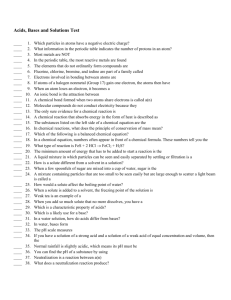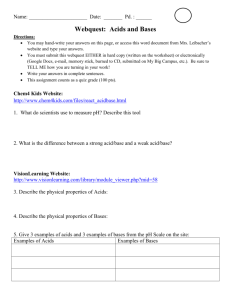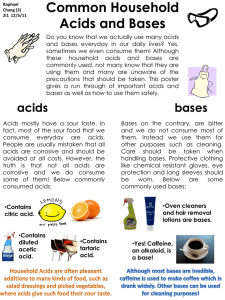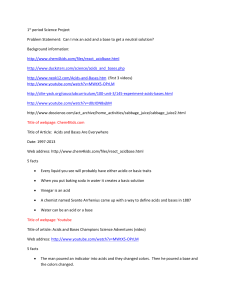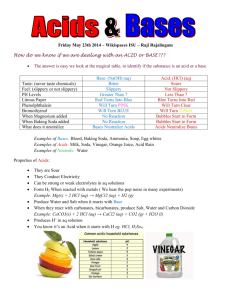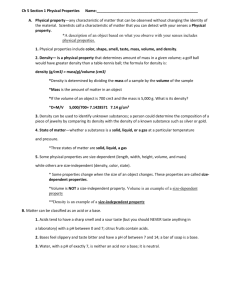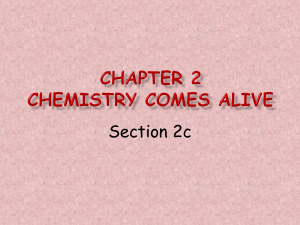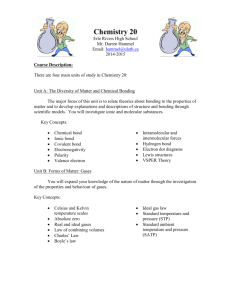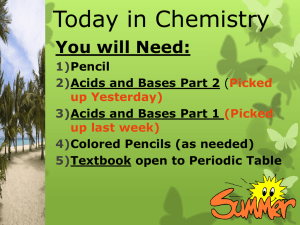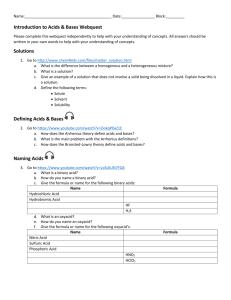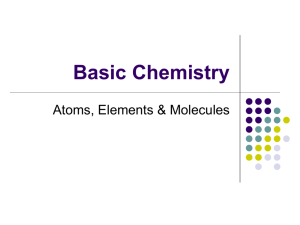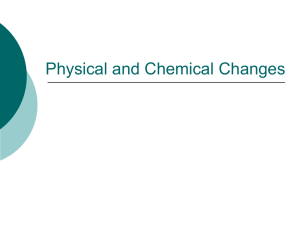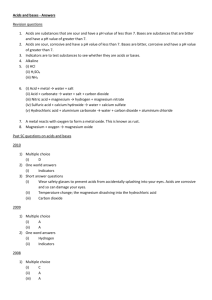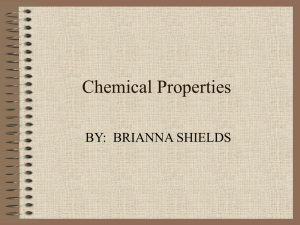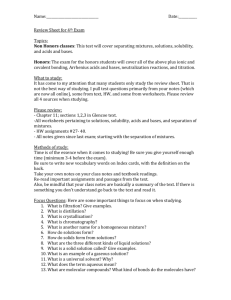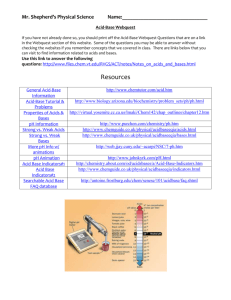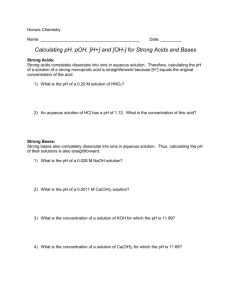matter webquest
advertisement
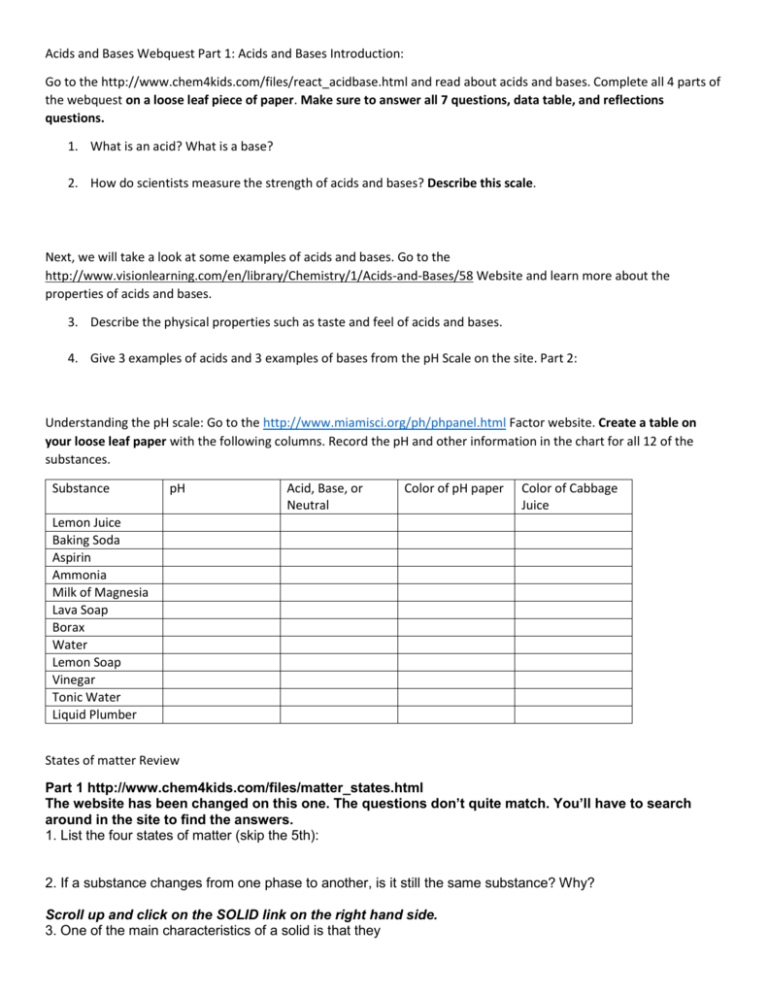
Acids and Bases Webquest Part 1: Acids and Bases Introduction: Go to the http://www.chem4kids.com/files/react_acidbase.html and read about acids and bases. Complete all 4 parts of the webquest on a loose leaf piece of paper. Make sure to answer all 7 questions, data table, and reflections questions. 1. What is an acid? What is a base? 2. How do scientists measure the strength of acids and bases? Describe this scale. Next, we will take a look at some examples of acids and bases. Go to the http://www.visionlearning.com/en/library/Chemistry/1/Acids-and-Bases/58 Website and learn more about the properties of acids and bases. 3. Describe the physical properties such as taste and feel of acids and bases. 4. Give 3 examples of acids and 3 examples of bases from the pH Scale on the site. Part 2: Understanding the pH scale: Go to the http://www.miamisci.org/ph/phpanel.html Factor website. Create a table on your loose leaf paper with the following columns. Record the pH and other information in the chart for all 12 of the substances. Substance pH Acid, Base, or Neutral Color of pH paper Color of Cabbage Juice Lemon Juice Baking Soda Aspirin Ammonia Milk of Magnesia Lava Soap Borax Water Lemon Soap Vinegar Tonic Water Liquid Plumber States of matter Review Part 1 http://www.chem4kids.com/files/matter_states.html The website has been changed on this one. The questions don’t quite match. You’ll have to search around in the site to find the answers. 1. List the four states of matter (skip the 5th): 2. If a substance changes from one phase to another, is it still the same substance? Why? Scroll up and click on the SOLID link on the right hand side. 3. One of the main characteristics of a solid is that they 4. Are the atoms in a solid allowed to move around much? YES NO 5. In the box to the right, draw what the atoms in a solid look like. Scroll back up and click on the LIQUID link on the right hand side. 6. One characteristic of a liquid is that it fills: 7. Atoms in a liquid have _________ energy than atoms in a solid, so the easiest way to change a solid to a liquid is to add _________. When changing from a solid to a liquid, there is a magic temperature for every substance called the ________________________________________. 8. To change a gas to a liquid, you will need to lower _____________________. The ______________________________________ is the temperature when the gas becomes a liquid. 9. Sometimes a liquid can be sitting there and its molecules will become a gas. That’s called ___________________________________________. Scroll back up and click on the GAS link on the right hand side. 10. Gases are really _____________________ and the atoms and molecules are full of _______________________, bouncing around constantly. 11. One of the physical characteristics is that a gas can ___________________________________________. Part 2 http://www.harcourtschool.com/activity/states_of_matter/ Click on Gas 12. Describe what you see in the beaker (the purple thing). 13. Describe what you see in the chamber (the big round thing). 14. What does the description say about the amount of space between gas molecules? Click on Liquid 15. Describe what you see in the beaker (the purple thing). 16. Describe what you see in the chamber (the big round thing). 17. What does the description say about the arrangement of the particles? Click on Solid 18. Describe what you see in the beaker (the purple thing). 19. Describe what you see in the chamber (the big round thing). 20. What does the description say about how the particles are arranged? Part 3 http://www.harcourtschool.com/activity/hotplate/index.html 21. Drag each of the substances onto the hot plate. Watch what happens. At what temperature do the substances melt, and then boil? White:____________ Melting __________ Boiling _________ Pink: __________ Melting __________ Boiling _________ Green: _________ Melting __________ Boiling _________
